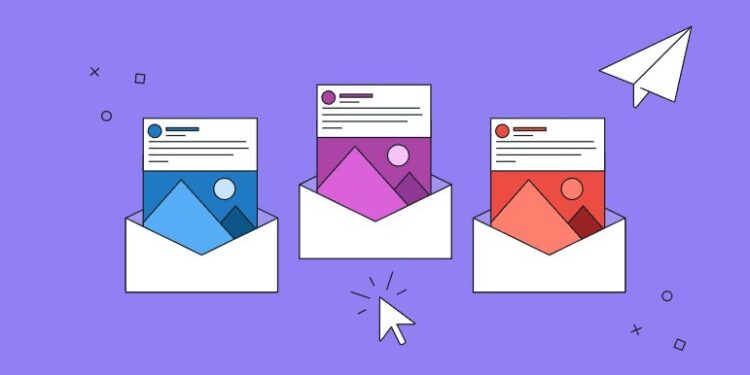Email marketing, a concept that has evolved significantly over the past decades, remains one of the most effective ways to communicate directly with potential and existing customers. But how does one harness its full potential while maintaining relevance and avoiding the dreaded spam label? Let’s dive into the world of email marketing, its history, types, and best practices.
A Brief Journey Through Time: The Evolution of Email Marketing
From Humble Beginnings
In 1978, the world saw the dawn of email marketing when Gary Thuerk of Digital Equipment Corporation sent a mass email, reeling in a whopping $13 million in sales. At its inception, it was a novelty, a new avenue to reach a tech-savvy audience.
To the Spam Age
As the 1990s approached, the charm of receiving an email started to wane. Users began to equate unsolicited emails with “spam,” prompting the advent of filters and blocking software. It challenged marketers to become more creative, crafting messages that could pass through these virtual barriers.
The Age of Measurement and Engagement
One of the most significant advancements in email marketing is the ability to measure its effectiveness. Marketers can refine their campaigns with real-time feedback and analytics, ensuring higher penetration and engagement. Moreover, email marketing offers a more personal touch, unlike broad-reach advertising mediums like TV.
Deciphering the Types of Email Marketing
Transactional Emails: More than Just Information
These emails are prompted by a user’s interaction with a company. Think of order confirmations, password resets, and email receipts. While their primary goal is to provide information related to a transaction, their high open rates offer a golden opportunity for marketers. Embedding promotional content or cross-selling within these emails can yield impressive results, given their inherent relevance to the recipient.
Direct Emails: Straight from the Marketer’s Desk
These emails are designed exclusively for promotional communication. Whether announcing a sale, launching a product, or sharing a catalog, direct emails aim to persuade the recipient to take a particular action. For this method to be effective, it’s crucial to have a well-segmented and up-to-date list of email recipients.
Golden Rules for Effective Email Marketing
1. Relevance is King
Always ensure your email content is relevant to the recipient. Segmented email lists can help deliver tailored messages to specific groups, increasing the chances of engagement.
2. Avoid the Spam Trap
Craft your emails with a keen eye on avoiding spam filters. It means being mindful of your subject lines and avoiding excessive use of capital letters or overly “salesy” phrases.
3. Be Consistent but Not Overbearing
Find a balance in your email frequency. While it’s essential to maintain consistent communication, bombarding recipients with daily emails can lead them to unsubscribe.
4. Analyze and Refine
Utilize the analytics at your disposal. Monitor open rates, click-through rates, and feedback to refine your approach continuously.
Conclusion
In conclusion, when executed with precision and understanding, email marketing can be a game-changer for businesses. It offers direct communication to your audience, building trust and loyalty and driving sales. By understanding its history, types, and best practices, one can craft campaigns that resonate with the audience and deliver tangible results.
Also, Read The Four Advantages of Digital Scanning.
FAQs
What is email marketing?
Email marketing is sending commercial messages using email, typically to a group of people. It can include sending advertisements, requesting business, promoting brand awareness, etc. Its primary goal is to build loyalty, trust, and brand awareness among recipients.
How did email marketing begin?
Email marketing dates back to 1978 when Gary Thuerk of Digital Equipment Corporation sent the first mass email, resulting in significant sales. As technology evolved, so did the strategies and effectiveness of email marketing.
Why do some emails get labeled as “spam”?
During the 1990s, unsolicited emails started being called “spam.” As the volume of unwanted emails grew, filters and blocking software were developed to help users manage their inboxes better. Emails that are too promotional, irrelevant to the recipient, or exhibit “spammy” characteristics can be filtered out.
How can I measure the success of my email marketing campaigns?
Modern email marketing allows marketers to track returns on investment through real-time feedback and analytics. Metrics like open rates, click-through rates, and conversion rates can provide insights into campaign performance.
What are transactional emails?
Transactional emails are triggered by a customer’s specific action with a company, like placing an order or resetting a password. Although their primary purpose is informational, they can also be used for promotional activities due to their high open rates.
How do direct emails differ from transactional emails?
Direct emails are primarily promotional and are sent to communicate a specific offer, product launch, or other marketing messages. Transactional emails, on the other hand, are primarily informational and relate to a user’s action with the company.
How can I make my email campaigns more effective?
To boost the effectiveness of your campaigns, ensure your content is relevant, avoid triggers that may get your emails labeled as spam, maintain consistent but not overwhelming communication, and continuously analyze and refine your approach based on feedback and metrics.



















